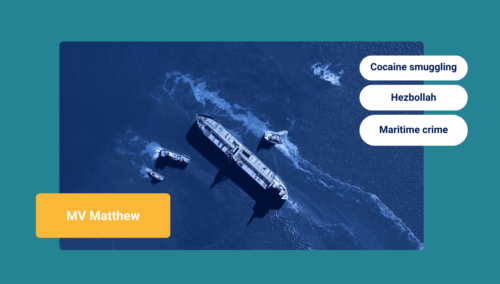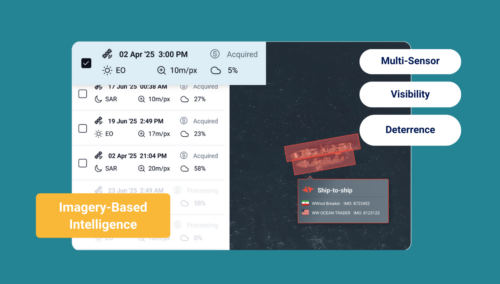
Port of Loading
What is a Port of Loading?
The port of loading (PoL) is the location where cargo and containers are loaded onto a shipping vessel, marking the beginning of its maritime journey. This port plays a crucial role in defining the shipping costs and duration of transit. Typically, the port of loading is clearly stated in the shipping contract, or the bill of lading.
Sending Containers at the Port of Loading
Containers that are going from one country to the next must go through a government-authorized port of loading. This requires the port to have a customs clearance facility, as well as port security. The port must comply with all applicable laws, regulations, and standards, and possess the infrastructure to handle the cargo safely.
Cargo that is being exported must have an export license from the relevant authority before it can be loaded onto a ship at the port of loading.

The Start of the Container Journey
In today’s global economy, clothing is often manufactured in countries such as Morocco and shipped around the world. While there are elements of this journey that take place on land, the focus of this article is its maritime journey. In this example, blue jeans are being manufactured in Morocco and shipped to London by sea.
The container of jeanswas delivered from the textile manufacturer to the Port of Casablanca on January 1, 2024, where it was loaded onto a ship. This port is referred to as the port of loading. The estimated time of arrival at the Port of London, whichwas the port of destination, was estimated as January 15.
It is possible to save time and reduce costs related to port congestion and late arrivals by choosing shippers based on transit times from the port of loading to intended import locations, with technology such as Windward’s Ocean Freight Visibility.
Issues at the Port of Loading
When shipments arrive at the port of loading, their maritime journey is about to begin. But, there are a number of common problems that shippers face before the container can begin its journey. These issues can impact the efficiency and smooth execution of the shipping process.
- Delays in loading: unforeseen circumstances, such as congestion or equipment malfunctions, can lead to delays in the loading process.
- Weather conditions: adverse weather conditions, such as storms or high winds, may affect the loading of cargo and the departure of vessels.
- Port congestion: overcrowding at the port can lead to congestion, causing delays in the loading and processing of cargo.
- Documentation Issues: problems with required documentation, such as incomplete or inaccurate paperwork, can lead to delays in customs clearance and loading.
- Customs and regulatory compliance: failure to comply with customs regulations or other regulatory requirements can lead to delays and fines.
- Labor strikes: labor strikes or disputes involving port workers can disrupt operations and lead to loading delays.
- Technical issues with equipment: malfunctions or breakdowns of loading equipment, such as cranes or conveyors, can halt the loading process.
- Security concerns: security issues, such as theft or unauthorized access to cargo, can disrupt the loading process and pose risks to the shipment.
- Capacity issues: the port may reach its maximum capacity, leading to limitations on the volume of cargo that can be loaded within a given timeframe.
- Vessel schedule changes: changes to the schedules of vessels can impact the timing of cargo loading, especially if there are unexpected modifications to the shipping itinerary.
To mitigate these issues, effective communication, proper planning, and collaboration among all parties involved – including shippers, carriers, port authorities, and customs officials – are essential. Additionally, utilizing advanced technologies and implementing best practices in supply chain management can contribute to smoother operations at the port of loading.
Any delays at the port of loading can lead to interruptions in the supply chain. These delays may, in turn, lead to changes in the ship the container is sent on, add transshipment elements at ports if the next ship isn’t going to the cargo’s destination, and interfere with operations. A Maritime AI™ platform may be needed to find efficient alternative shipping options.
Port of Loading in Incoterms
There are a number of international commercial terms (Incoterms®) that prominently feature the port of loading. These terms define the respective responsibilities and obligations of the buyer and the seller in international trade transactions.
- Free On Board (FOB): the seller is responsible for delivering the goods on board the vessel at the named port of shipment (the port of loading). The risk transfers from the seller to the buyer once the goods are on board.
- Cost and Freight (CFR): seller is required to deliver the goods on board the vessel at the named port of shipment (port of loading). The seller is also responsible for the cost of freight to bring the goods to the named port of destination.
- Cost, Insurance, and Freight (CIF): similar to CFR, CIF requires the seller to deliver the goods on board the vessel at the named port of shipment (port of loading). Additionally, the seller is responsible for the cost of freight and insurance to bring the goods to the named port of destination.
- Carriage Paid To (CPT): the seller is responsible for delivering the goods to the carrier or another person nominated by the seller at the named place (which could be the port of loading). The risk transfers from the seller to the buyer when the goods are handed over to the carrier.
- Carriage and Insurance Paid To (CIP): CIP terms are similar to CPT but also include insurance. The seller delivers the goods to the carrier at the named place (which could be the port of loading) and pays for the cost of carriage and insurance.
In each of these Incoterms, the location identified for the delivery of the goods is the port of loading. The specific responsibilities of the buyer and the seller, as well as the point at which risk transfers, vary among these terms.











